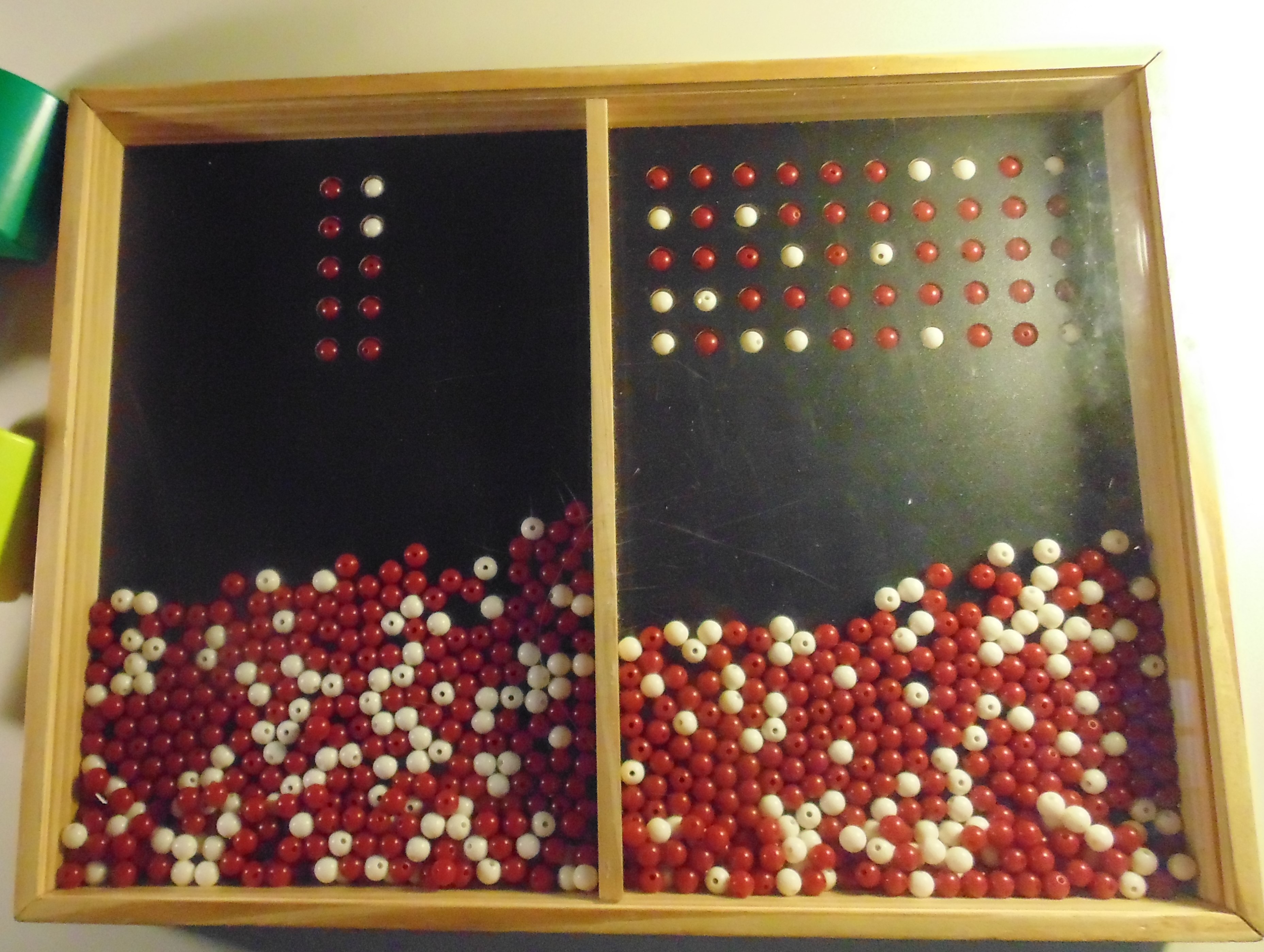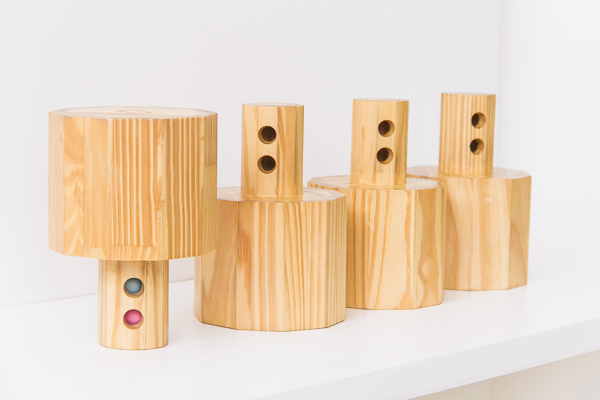SAMPLING
In Statistics, sampling is the process of obtaining samples, which are nothing more than sets of a given population. As this is usually very large, carrying out a complete census would be practically impossible, so this type of process is used.
The piece below has white and red balls and spaces to choose a certain random sample. For example, if the dots are people and their colors represent your opinions about certain government action, it is possible to estimate the percentage of the population in favor of such action. And if the sample does not have biases, the fraction of favorable in the sample is expected to be close to the fraction in the entire population.
In the compartments of this piece, the amount of white and red balls is the same, so as well as their proportions. What differs from each other is that in one the samples are of 10 individuals, while in the another is 50. Which compartment will be better to give a guess closer to reality?

In this other piece, it is not possible to see the contents of the rattles, only two balls of each turn. Is it possible to determine exactly how many balls and what colors are inside?

Probability Theory makes it possible to obtain answers to these questions with reasonable confidence. Increasing the number of experiments also increases the degree of certainty of the answer. (Certainly only the artisan who made those pieces, unless he's lost the information...)
One way of thinking is: if the rattle contains n white balls and m red balls, the probability of getting, for example, two white is ( n / n + m ) ∙ ( n − 1 / n + m − 1 ).
The first fraction is the proportion of white balls in the total number of balls, and corresponds to the chance of getting the first white ball. The second is the chance of getting the second white ball, taking into account that a white ball has already been withdrawn.
